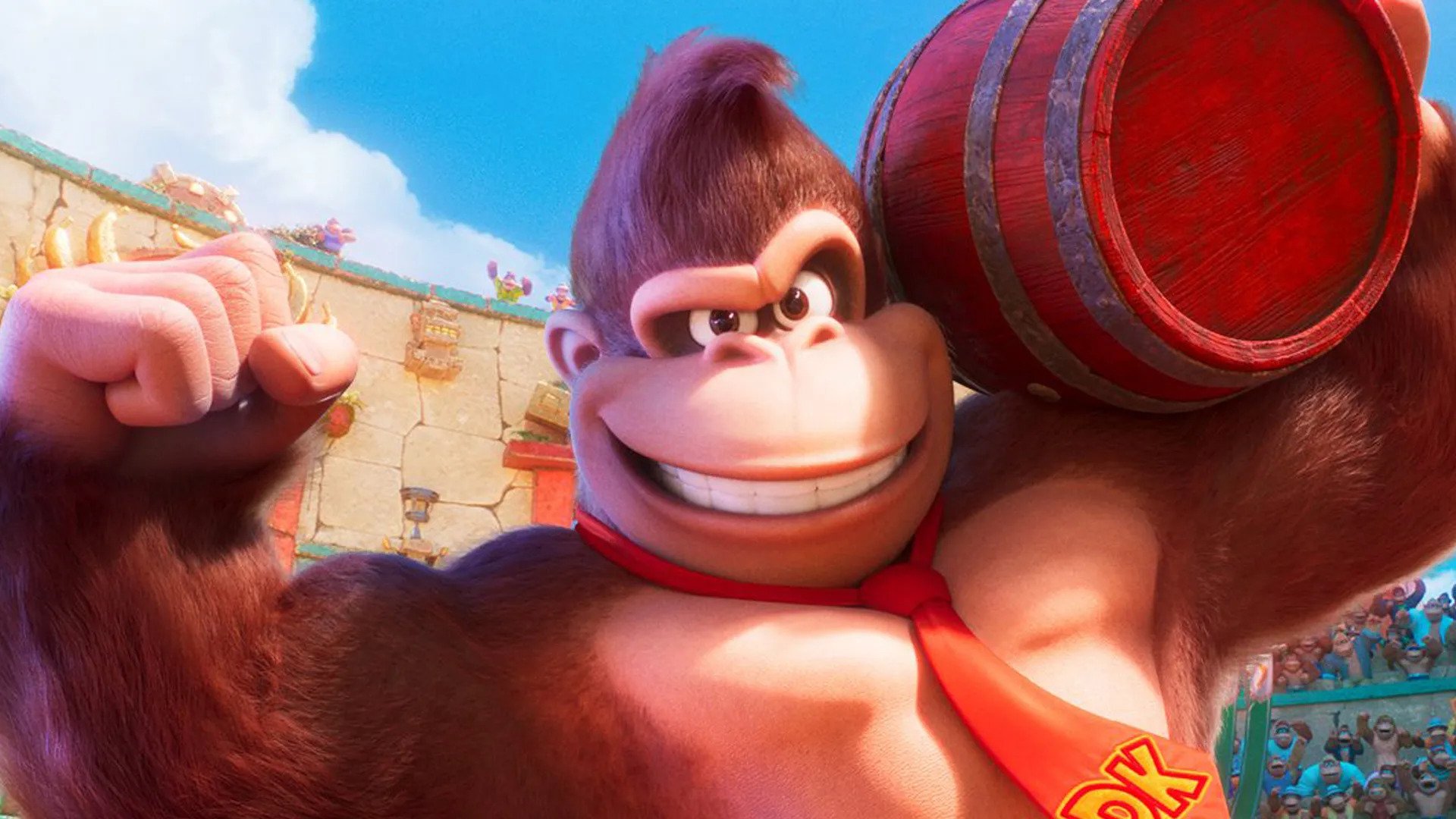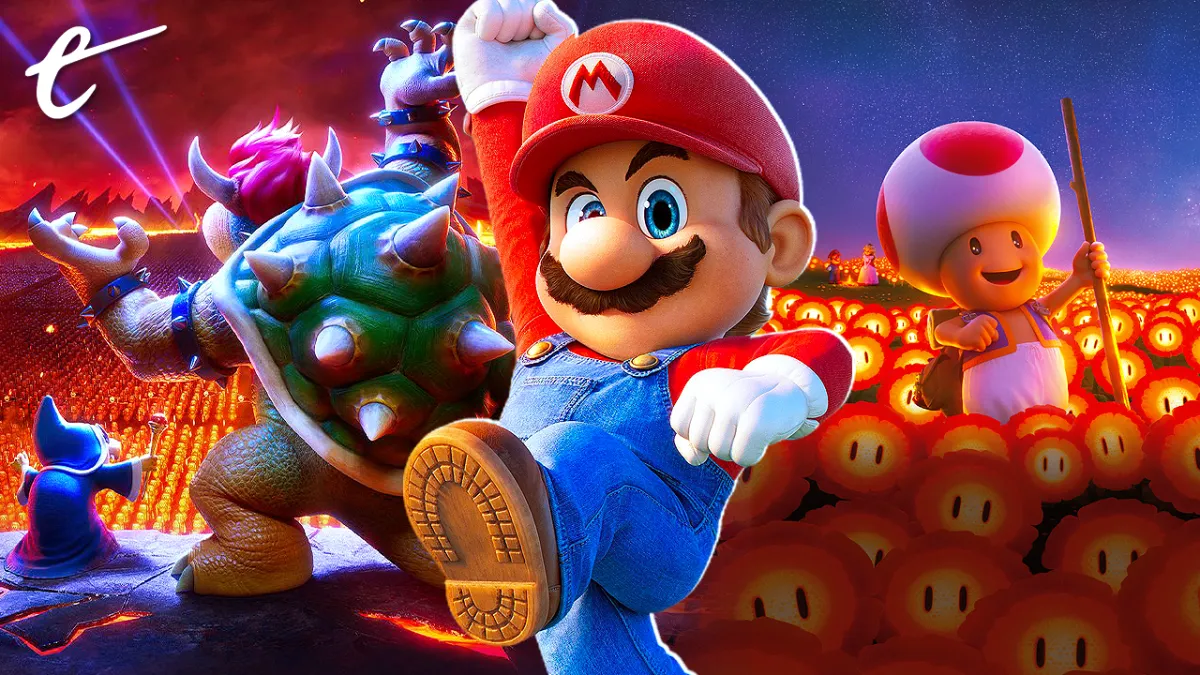The Super Mario Bros. Movie was a lot of the things I expected it to be. A simple story crammed full with Nintendo Easter eggs and told at the breathless pace commonly found in previous Illumination animated films like Minions, Sing, and The Secret Life of Pets. But while it’s clear that much of the joy of the Mario Movie will depend on your own history with the franchise, I wasn’t quite prepared for just how nostalgically powerful the incredible generation-spanning music would be, as well as how the wrong song at the wrong time could completely pull me out of the experience.
While my eyes were darting around every frame of the Mario Movie soaking in every detail from the Punch-Out Pizzeria, to the memorabilia crammed into Mario’s bedroom, to the familiar Kongs packed in the stadium, it was my ears that were the doing the most work when it came to clocking callbacks to Nintendo’s storied history.
The Super Mario Bros. Movie’s Music Is at Its Best When It Celebrates Nintendo’s History
It’s remarkable how immediately transportive composer Brian Tyler’s take on the music of Koji Kondo and the entire Mario franchise is, as well as how the movie uses that magic to great effect. When Mario and Luigi venture down into the sewers of Brooklyn in the opening act, the subterranean melody of World 1-2 from the original game sets the scene. The first shot of Peach’s Castle was paired with “Inside the Castle Walls,” which took me back to the first time I ever held a Nintendo 64 controller at a pre-launch demo kiosk in a Toys “R” Us and had my mind blown by witnessing the future of 3D gaming.
Throughout the Mario Movie, we get musical nods to the entirety of the franchise. Super Mario Bros. 3 shines when Mario gets his Tanooki power-up during the climactic battle. Our brief glimpse at a herd of Yoshi (Yoshis?) out in the wild is accompanied by the familiar notes from Yoshi’s Island. And the scene-stealing nihilistic Luma is fittingly paired with the Super Mario Galaxy theme. It’s wild how, whenever these musical bits would pop up, I could almost feel their respective generations’ controllers in my hands, like some sort of dorky phantom limb.

The power of this music is so vast that it stretches beyond the boundaries of just the core Mario games. When Luigi gets kidnapped by Bowser’s goons, we hear a few notes from the Luigi’s Mansion theme. When Toad shows his bravery during the adventure, we hear the opening woodwind notes from the Captain Toad: Treasure Tracker theme. And I picked up on all of these after just one single viewing – I imagine there’s plenty I missed out on given the speed at which the movie pulls us along. For example, I didn’t notice anything from Super Mario Sunshine, apart from a storefront marquee in Brooklyn. But I guess you have to save something for the sequel.
I also dug the handful of original songs sung by Bowser, which allowed Jack Black to really lean into the absurdity of it and play the villain as a cross between Meatloaf, Elton John, and Black’s own Tenacious D persona.
But it’s safe to say that no musical moment is as singular as when we’re introduced to Seth Rogen’s Donkey Kong, who gives us a brief taste of the iconic “DK Rap” from Rare’s Donkey Kong 64. That said, it’s a bummer that Grant Kirkhope wasn’t credited for his music, which is hopefully something that’s remedied by the time the movie hits home release.
The Super Mario Bros. Movie’s Music Is at Its Worst with Unnecessary Needle Drops
But while the orchestrated score and new arrangements for The Super Mario Bros. Movie were in a league of their own, the needle drops found throughout the movie were a constant bore. Whenever I heard the opening notes of a song like “No Sleep Till Brooklyn,” “Mr. Blue Sky,” or “Holding Out for a Hero” (which was ironically also used this week in the new Apple TV+ Tetris film), my first reaction was to roll my eyes. It felt cut from the same pandering cloth that animated movies have been relying on ever since the original Shrek, and it’s definitely a staple of Illumination’s movies.

In my opinion, the worst offender here came when Mario, Peach, and Toad entered the Jungle Kingdom and were introduced to the world of the Kongs. The movie immediately shoved A-ha’s “Take On Me” into our ears, for a reason I couldn’t quite comprehend. Instead of feeling any wonder or excitement from the roller coaster of discovering this new-yet-familiar location, I kept thinking about the dumb song choice.
It turns out Brian Tyler did compose a track that pulled from DK history specifically for this moment that was swapped out for A-ha at some point before release. Folks on Twitter stitched together what this scene would’ve originally felt like, and I feel like it’s way more impactful this way.
The weirdest part is wondering just who these songs are for. Do the kids that are part of this movie’s target audience really connect with ELO and Bonnie Tyler? Is a parent without a vast knowledge of Nintendo history going to enjoy the movie more because they can pull a Leo DiCaprio in Once Upon a Time in Hollywood when an AC/DC song starts to play? At the very least, most of these needle drops are from songs from decades ago, which won’t age quite as terribly as using contemporary music. But their inclusion still felt like an unnecessary addition to an otherwise phenomenal audio experience.
A couple months back, I wrote about the fantastic Theatrhythm Final Bar Line and how Final Fantasy was in a rarefied atmosphere of gaming franchise where the music is that worthy of celebration. Well, for the 90 minutes I was in the theater this week, it was clear that the Mario series is occupying that exact same space.






Published: Apr 8, 2023 11:00 am